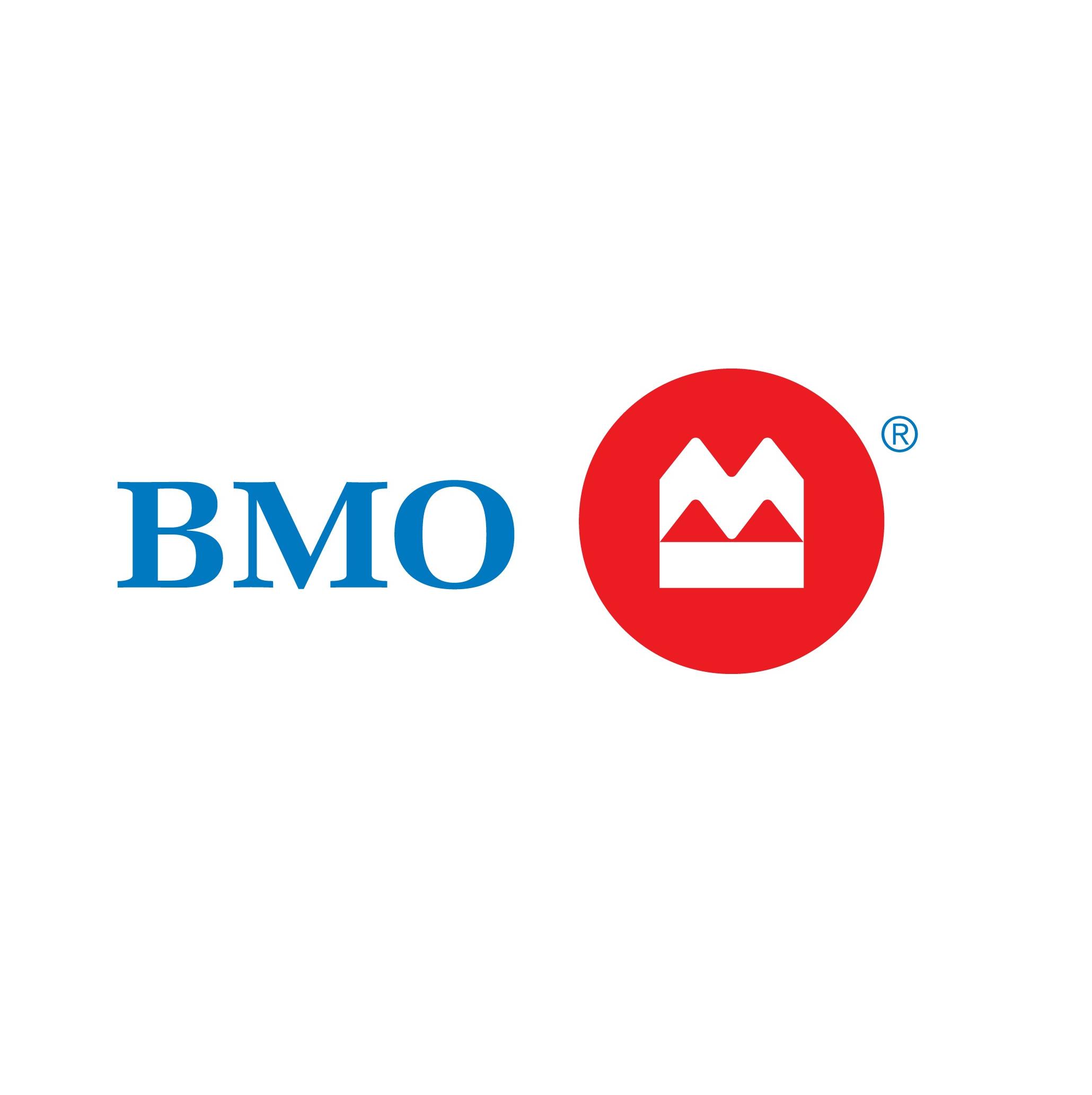

Finance
What Are Capital Markets
Published: December 25, 2023
Discover the intricacies of capital markets and their impact on the world of finance. Explore the various instruments, institutions, and participants that make up these dynamic financial systems.
(Many of the links in this article redirect to a specific reviewed product. Your purchase of these products through affiliate links helps to generate commission for LiveWell, at no extra cost. Learn more)
Table of Contents
Introduction
In the world of finance, capital markets play a crucial role in facilitating the flow of funds between investors and businesses. These markets provide a platform for businesses to raise capital and for investors to invest their money with the expectation of generating returns. Capital markets are essential for the functioning of modern economies, as they support economic growth and provide opportunities for individuals and organizations to access funding.
In this article, we will explore the concept of capital markets, their various types, functions, and the key participants involved. Additionally, we will delve into the importance of capital markets in driving economic development and the challenges they face.
Capital markets can be thought of as the backbone of the financial system, connecting individuals, corporations, and governments looking to raise capital with investors seeking investment opportunities. By facilitating the buying and selling of financial assets like stocks, bonds, and other securities, capital markets enable the transfer of funds from those with excess capital to those in need of funds.
Capital markets are dynamic and ever-evolving, marked by continuous trading and price discovery. They provide investors with a transparent and efficient mechanism to invest their savings, while allowing businesses to access a diverse pool of funding options.
As we delve deeper into the world of capital markets, it is important to understand the various types of capital markets and the functions they serve. Whether it’s the stock market, bond market, or derivatives market, each type of capital market has its unique features and plays a distinct role in the overall financial ecosystem.
Definition of Capital Markets
Capital markets can be defined as financial markets where individuals, corporations, and governments trade financial assets such as stocks, bonds, and derivatives. These markets allow for the exchange of long-term securities and promote the efficient allocation of capital.
In capital markets, the buying and selling of financial assets take place through intermediaries such as stock exchanges, brokerage firms, and investment banks. These intermediaries facilitate transactions and provide a platform for investors and issuers to interact.
The primary function of capital markets is to enable the transfer of funds from investors to businesses or governments that require capital. This process occurs through the issuance and trading of securities, with investors purchasing these securities in the hopes of earning a return on their investment.
Capital markets can be further categorized into primary and secondary markets. The primary market is where new securities are issued and sold for the first time. This is typically done through initial public offerings (IPOs) for stocks or bond auctions for fixed-income securities. The secondary market, on the other hand, is where previously issued securities are bought and sold among investors without the involvement of the issuing company or government.
Capital markets also offer opportunities for investors to engage in margin trading, short selling, and trading of derivative products such as options and futures. These complex financial instruments allow investors to hedge risks, speculate on price movements, and potentially amplify returns.
It is important to note that capital markets are distinct from money markets, which focus on short-term borrowing and lending activities. While money markets deal with highly liquid and low-risk instruments such as Treasury bills and commercial paper, capital markets specialize in longer-term securities that are often associated with higher levels of risk and return.
Overall, capital markets play a critical role in mobilizing savings, allocating capital efficiently, and enabling economic growth. By providing a platform for investors and businesses to interact, capital markets contribute to the development and stability of the financial system.
Types of Capital Markets
Capital markets are diverse and encompass a range of different marketplaces where various types of financial assets are traded. Here are some of the key types of capital markets:
- Stock Market: Also known as the equity market, the stock market is where shares of publicly traded companies are bought and sold. Investors can purchase ownership stakes in companies, allowing them to participate in the company’s success through dividends and capital appreciation.
- Bond Market: The bond market, also referred to as the fixed-income market, involves the buying and selling of bonds issued by governments, municipalities, and corporations. Bonds are debt instruments where the issuer borrows funds for a defined period, typically paying periodic interest to the bondholders. The bond market provides opportunities for investors to earn regular income and provides issuers with a way to raise funds.
- Foreign Exchange Market: The foreign exchange market, also known as the forex market, is where currencies are bought and sold. It is the largest and most liquid market globally, with trading volume exceeding trillions of dollars daily. Participants in this market include individuals, businesses, and central banks, who engage in currency trading to facilitate international financial transactions and manage exchange rate risks.
- Commodity Market: In the commodity market, primary commodities such as gold, oil, natural gas, agricultural products, and metals are traded. Commodities serve as essential raw materials or inputs for various industries and are subject to price fluctuations influenced by supply and demand dynamics. Investors can participate in commodity markets through futures contracts, options, or exchange-traded funds (ETFs).
- Derivatives Market: The derivatives market involves the trading of financial instruments whose value is derived from an underlying asset or reference rate. Common derivatives include options, futures, and swaps. The derivatives market allows investors to speculate on price movements, hedge risks, and manage exposure to various financial variables.
These are just a few examples of the types of capital markets that exist. Each market has its unique characteristics, specific regulations, and participants. Additionally, advancements in technology have led to the emergence of online trading platforms and electronic communication networks that facilitate access to these capital markets from anywhere in the world.
Understanding the different types of capital markets is crucial for investors and businesses alike, as it enables them to identify the most suitable market to meet their financial needs and investment objectives.
Functions of Capital Markets
Capital markets serve several important functions that contribute to the overall efficiency and stability of the financial system. These functions can be summarized as follows:
- Raising Capital: One of the primary functions of capital markets is to provide a platform for companies, governments, and other entities to raise capital. Businesses can issue stocks or bonds to raise funds for expansion, research and development, or other capital-intensive projects. Governments can also issue bonds to finance public infrastructure projects or meet budgetary requirements. By facilitating the sale of these financial instruments to investors, capital markets enable the flow of funds from savers to borrowers.
- Facilitating Price Discovery: Capital markets play a crucial role in determining the fair value of financial assets. Through the buying and selling activities of investors, prices are continuously adjusted based on market supply and demand dynamics. This process, known as price discovery, ensures that market participants have access to accurate and up-to-date information about the value of the assets they hold or wish to acquire. It also enables efficient allocation of capital and promotes market efficiency.
- Liquidity Provision: Capital markets provide liquidity, allowing investors to buy or sell their financial assets quickly and at fair prices. Liquidity is essential as it enhances market efficiency, reduces transaction costs, and provides flexibility to investors. The presence of liquid capital markets ensures that investors have access to a ready market for their holdings, thereby increasing market participation and confidence.
- Risk Management: Capital markets offer a range of risk management tools, such as derivatives, that allow investors to hedge against price fluctuations, interest rate risks, currency risks, and other market uncertainties. These instruments help mitigate risks and provide investors with opportunities to manage their portfolios effectively. Additionally, the existence of liquid and transparent capital markets facilitates risk diversification, as investors can easily buy and sell different types of assets.
- Encouraging Investment and Savings: Capital markets play a vital role in promoting investment and encouraging savings. By offering the potential for returns and capital appreciation, capital markets provide individuals and institutions with incentives to invest their savings for long-term growth. This, in turn, fuels economic development by channeling funds into productive sectors of the economy.
- Efficient Allocation of Capital: Capital markets allocate capital to its most productive uses within an economy. Through the process of capital allocation, funds are directed towards projects and businesses with the highest potential returns. This ensures that resources are utilized efficiently and drives economic growth. Capital markets evaluate investment opportunities based on factors such as risk, return, and market demand, enabling efficient allocation of capital across different sectors and geographic regions.
Overall, capital markets serve as a vital intermediary between savers and borrowers, facilitating the flow of funds and promoting economic growth. Through their functions of raising capital, price discovery, liquidity provision, risk management, and efficient allocation of capital, capital markets play a crucial role in the functioning of modern economies.
Participants in Capital Markets
Capital markets involve a wide range of participants, each with a distinct role in the buying, selling, and trading of financial assets. Understanding these participants and their functions is essential in comprehending how capital markets operate. Here are some of the key participants:
- Investors: Investors are individuals, institutions, or entities that provide capital by purchasing financial assets in capital markets. They include retail investors, such as individuals trading through brokerage accounts, as well as institutional investors such as pension funds, mutual funds, and hedge funds. Investors seek to generate returns on their investments by acquiring financial assets that align with their investment strategies and risk tolerances.
- Issuers: Issuers are entities that offer and sell financial assets to raise capital in capital markets. They can be corporations issuing stocks or bonds or governments issuing government bonds. Issuers provide investors with opportunities to invest in their assets, thereby securing funding for various purposes, such as business expansion, infrastructure development, or debt financing.
- Intermediaries: Intermediaries play a crucial role in facilitating transactions and providing services in capital markets. These include brokerage firms, investment banks, and stock exchanges. Intermediaries act as a bridge between investors and issuers, helping execute trades, providing investment advice, underwriting securities offerings, offering liquidity, and ensuring compliance with regulatory requirements.
- Regulators: Regulators are government bodies or agencies responsible for overseeing the operations and regulating the conduct of participants in capital markets. They enforce regulations aimed at promoting transparency, protecting investors, and maintaining fair and efficient markets. Regulators ensure compliance with financial laws, monitor market activities, and prevent fraud or market manipulation, thereby safeguarding the integrity of the capital markets.
- Financial Advisors: Financial advisors are professionals who provide guidance and advice to investors on investment strategies, asset allocation, and portfolio management. They assist individual investors and institutions in making informed decisions regarding their investments, taking into account their financial goals, risk appetite, and market conditions. Financial advisors may work independently or be associated with brokerage firms, wealth management companies, or banks.
- Market Makers: Market makers are entities that facilitate liquidity in the financial markets by offering to buy or sell specific securities. They provide quotes for buying and selling securities and help maintain orderly trading by ensuring there is a continuous supply of buyers and sellers. Market makers enhance market liquidity and help narrow the bid-ask spread, making it easier for investors to execute trades.
These are just a few examples of the diverse range of participants involved in capital markets. Each participant has a vital role in the functioning and dynamics of the market. Their collective actions contribute to the liquidity, transparency, and overall efficiency of capital markets.
Key Financial Instruments in Capital Markets
Capital markets offer a wide variety of financial instruments that investors can trade and use to achieve their investment objectives. These instruments represent ownership stakes, debt obligations, or derivative contracts. Here are some key financial instruments commonly traded in capital markets:
- Stocks: Stocks, also known as equities or shares, represent ownership stakes in publicly traded companies. By purchasing stocks, investors become shareholders and participate in the company’s profits through dividends and capital appreciation.
- Bonds: Bonds are debt instruments through which governments, municipalities, and corporations borrow funds from investors. When an investor buys a bond, they are essentially lending money to the issuer for a specified period. In return, the issuer pays periodic interest (coupon) to the bondholder and repays the principal amount (face value) at maturity.
- Derivatives: Derivatives are financial instruments that derive their value from an underlying asset or reference rate. Common types of derivatives include options, futures, forwards, and swaps. Derivatives enable investors to speculate on price movements, hedge against risks, or gain exposure to specific market variables.
- Exchange-Traded Funds (ETFs): ETFs are investment funds traded on stock exchanges that aim to replicate the performance of a specific index or asset class. ETFs offer diversification and flexibility as they allow investors to gain exposure to a range of assets, including stocks, bonds, commodities, or currencies, through a single traded security.
- Mutual Funds: Mutual funds pool money from multiple investors and invest in a diversified portfolio of assets, such as stocks, bonds, or a combination of both. Mutual funds are managed by professional fund managers who make investment decisions on behalf of the investors.
- Options: Options are derivative contracts that give the buyer the right, but not the obligation, to buy or sell an underlying asset at a predetermined price (strike price) within a specific time period. Options can be used for hedging, speculation, or implementing advanced trading strategies.
- Foreign Exchange (Forex): Foreign exchange refers to the trading of currencies in the global marketplace. Forex allows investors to profit from changes in exchange rates between different currencies and facilitates international trade and investment.
- Commodities: Commodities such as gold, silver, oil, natural gas, and agricultural products are traded in the commodities market. Investors can gain exposure to commodities through futures contracts, options, or ETFs, allowing them to speculate on price movements or hedge against inflation.
These financial instruments offer different levels of risk, return potential, and liquidity. Investors choose instruments that align with their investment goals, risk appetite, and time horizon. The presence of a wide array of financial instruments enhances the opportunities for diversification and enables investors to tailor their portfolios to meet their specific needs.
Regulation of Capital Markets
Capital markets are subject to extensive regulation to ensure fairness, transparency, and stability. The regulation of capital markets is vital for investor protection, market integrity, and the overall functioning of the financial system. Here are some key aspects of the regulation of capital markets:
- Government Oversight: Capital markets are regulated by government bodies or agencies that enforce laws and regulations to maintain orderly and fair markets. These regulatory bodies vary by country, but their objectives generally include protecting investors, promoting market integrity, and ensuring the stability and efficiency of the financial system.
- Securities Laws: Securities laws govern the issuance, trading, and disclosure of securities in capital markets. These laws require companies and other entities to provide accurate and timely information to investors, ensuring transparency and preventing fraudulent practices. Securities laws also regulate the conduct of market participants, including brokers, advisors, and exchanges.
- Listing Requirements: Stock exchanges often impose listing requirements that companies must meet to be listed for trading. These requirements typically include financial standards, corporate governance practices, and disclosure obligations. By setting these criteria, exchanges aim to protect investors and maintain the integrity of the markets.
- Regulatory Compliance: Participants in capital markets, such as financial institutions, brokers, and investment advisors, must comply with regulations governing their activities. Compliance requirements may include licensing, registration, reporting, and conduct standards. Regulators conduct regular inspections and audits to ensure compliance and may impose penalties for violations.
- Market Surveillance and Enforcement: Regulatory bodies monitor trading activities in capital markets to detect and deter market abuse, insider trading, and other fraudulent practices. They employ sophisticated surveillance systems and data analysis techniques to identify suspicious activities and take enforcement actions when necessary. Market manipulation and illegal trading practices are subject to severe penalties.
- Investor Protection: The regulation of capital markets includes measures to protect individual investors. These can include rules on disclosure, investor education initiatives, safeguards against fraudulent schemes, and mechanisms for handling investor complaints and disputes. Regulators strive to ensure that investors have access to accurate information and can make informed investment decisions.
- International Coordination: Given the global nature of capital markets, regulators often collaborate and coordinate their efforts across borders. International organizations, such as the International Organization of Securities Commissions (IOSCO), promote cooperation and harmonization of regulatory standards to address cross-border issues and ensure consistent oversight of global capital markets.
The goal of capital market regulation is to create a level playing field, instill investor confidence, and protect the integrity of the financial system. By establishing and enforcing rules and standards, regulators aim to maintain the proper functioning of capital markets, foster transparency, and ensure fair and efficient markets for all participants.
Importance of Capital Markets
Capital markets play a crucial role in the functioning of modern economies and are essential for promoting economic growth, allocating resources efficiently, and providing opportunities for individuals and organizations. Here are some key reasons why capital markets are important:
- Facilitating Economic Growth: Capital markets enable businesses to raise funds for investment, research and development, and expansion. By providing access to capital, capital markets fuel entrepreneurial activity and stimulate economic growth. When companies have the financial resources to innovate, develop new products, and expand their operations, it creates job opportunities, encourages competition, and drives overall economic development.
- Allocation of Capital: Capital markets facilitate the efficient allocation of capital across different sectors of the economy. Investors can choose from a wide range of investment options, including stocks, bonds, and other financial instruments, to deploy their capital. By evaluating risk, return potential, and market conditions, capital markets direct funds to their most productive uses, ensuring that resources flow to businesses with the highest growth prospects.
- Access to Funding: Capital markets provide a platform for companies, governments, and other entities to access funding. Through issuing stocks and bonds, businesses can raise capital to finance operations, fund new projects, or undertake acquisitions. Governments can also raise funds through issuing government bonds to finance public infrastructure or budgetary requirements. The availability of diverse funding sources through capital markets promotes financial stability and reduces dependence on traditional bank loans.
- Investment Opportunities: Capital markets offer individuals and institutions the opportunity to invest their savings and earn returns. Investing in capital markets allows individuals to participate in the growth of businesses and the economy. It provides avenues for long-term wealth accumulation, retirement planning, and meeting financial goals. Capital markets offer a range of investment options, catering to diverse risk appetites and investment objectives.
- Liquidity: Capital markets provide liquidity, allowing investors to buy and sell financial assets easily. Liquidity enhances market efficiency by ensuring that buyers and sellers can transact at fair prices and without significant delays. The presence of liquid capital markets encourages investment, facilitates portfolio readjustments, and supports economic stability.
- Price Discovery: Capital markets enable the process of price discovery, determining the fair value of financial assets. Through buying and selling activities, market participants contribute to price formation based on supply and demand dynamics. Price discovery enhances market transparency and assists investors in making informed decisions. It also assists companies in valuing their securities and helps assess the overall health of the economy.
- Risk Management: Capital markets offer a variety of risk management tools such as derivatives. These instruments help investors hedge against price fluctuations, interest rate risks, and other market uncertainties. By managing risk, capital markets promote stability, encourage investment, and provide avenues for investors to protect their portfolios and financial well-being.
Overall, capital markets are critical drivers of economic growth, innovation, and financial stability. They provide access to funding, promote efficient allocation of capital, offer investment opportunities, enhance liquidity, and enable the effective management of risks. By connecting savers, investors, and businesses, capital markets contribute to the development and prosperity of economies around the world.
Challenges and Risks in Capital Markets
While capital markets play an important role in the global economy, they also face various challenges and risks that could impact their stability and efficiency. Here are some key challenges and risks faced by capital markets:
- Market Volatility: Capital markets are inherently subject to fluctuations in prices and market conditions. Volatility can be influenced by factors such as economic indicators, geopolitical events, and investor sentiment. Sudden price swings and market turbulence can create uncertainties for investors and pose challenges for risk management.
- Market Manipulation: Market manipulation refers to illegal activities that distort market prices and deceive investors for personal gain. Manipulative practices such as insider trading, front-running, or spreading false information can undermine the fairness and integrity of capital markets. Regulators and market participants need to remain vigilant in detecting and preventing such activities.
- Liquidity Risks: Insufficient liquidity in capital markets can hinder trading activities and make it challenging for investors to buy or sell assets at desired prices. Liquidity risks can arise during periods of market stress or when certain assets become illiquid. Lack of liquidity can potentially amplify market volatility and increase the difficulty of unwinding positions.
- Regulatory Compliance: The complex regulatory landscape governing capital markets presents challenges for participants in terms of compliance. Regulatory requirements and reporting obligations often entail significant costs and administrative burdens for market participants. Staying up-to-date with changing regulations while ensuring adherence to compliance standards can be a time-consuming and costly endeavor.
- Technological Disruptions: The rapid advancement of technology introduces both opportunities and risks for capital markets. While technology has made trading more efficient and accessible, it also brings risks like cyber threats, system malfunctions, and algorithmic trading errors. Ensuring robust cybersecurity measures and managing the risks associated with reliance on technology are crucial priorities for market participants.
- Systemic Risks: Capital markets are interconnected with other segments of the financial system, including banks, insurers, and payment systems. Systemic risks arise when the failure or distress of a key institution or market participant has widespread adverse effects on the financial system. These risks can lead to financial contagion and a loss of confidence in the markets.
- Investor Protection: Protecting the interests of individual investors is an ongoing challenge in capital markets. Investors may face risks related to fraud, mis-selling of complex products, or inadequate disclosures. It is crucial to enhance investor education, promote transparency, and enforce robust regulations to safeguard investors and their investments.
- Global Economic Uncertainty: External economic factors such as recessions, trade wars, or geopolitical tensions can pose challenges for capital markets. Uncertainties in economic growth, interest rates, or currency exchange rates can impact investor sentiment and market stability. Monitoring global economic conditions and understanding their implications for capital markets is essential.
Addressing these challenges and risks requires continuous efforts from regulators, market participants, and policymakers. Enhancing market surveillance, promoting investor education, strengthening risk management practices, and adapting to evolving technologies are critical to maintaining the integrity and resilience of capital markets.
Conclusion
Capital markets are the lifeblood of modern economies, providing essential mechanisms for businesses to raise capital and for investors to deploy their savings. They play a vital role in fostering economic growth, allocating resources efficiently, and promoting financial stability. The wide range of financial instruments and investment opportunities offered by capital markets allow individuals and institutions to participate in the growth and success of businesses and economies.
However, capital markets also face challenges and risks, ranging from market volatility and manipulation to liquidity concerns and regulatory compliance. These challenges require ongoing vigilance, robust risk management practices, and effective regulatory oversight to protect the integrity and stability of the markets.
Efforts to enhance transparency, investor protection, and regulatory compliance are crucial for ensuring the trust and confidence of market participants. Additionally, technological advancements and global economic uncertainties continue to shape the landscape of capital markets, demanding adaptability and innovative solutions.
In conclusion, capital markets are essential components of the global financial system. They facilitate the flow of funds, enable investment opportunities, promote economic growth, and contribute to the overall well-being of societies. By understanding the functions, participants, and key instruments of capital markets, investors can make informed decisions and capitalize on the opportunities presented by these dynamic marketplaces.














